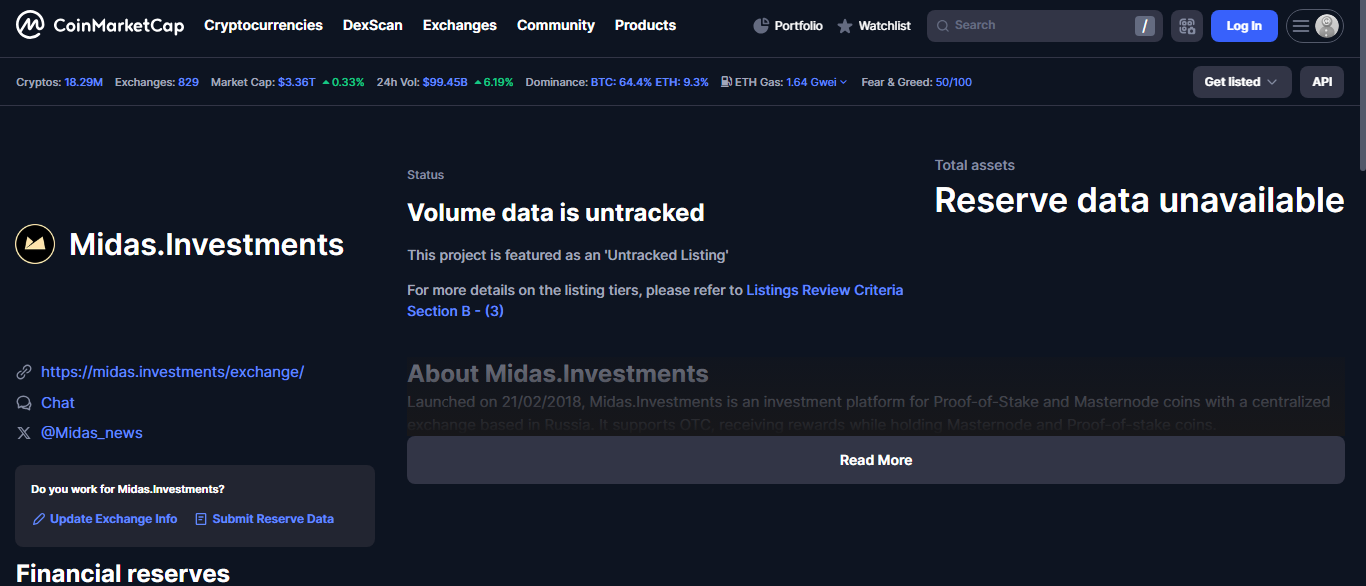Midas Investments Review - High APYs with High Risk in CeDeFi

What Midas Investments Claimed to Be
Midas Investments launched in early 2018 as a custodial CeDeFi platform focusing on yield strategies across Proof-of-Stake and masternode assets. It promised high returns through automated portfolio tools, liquidity provision, vaults, and its own native token incentives, blending DeFi yields with custodial simplicity.
The team marketed it as a middle ground between classic centralized finance and the transparency of DeFi, highlighting algorithmic management and around-the-clock monitoring to keep funds optimized.
Yield Strategies and Product Offerings
he platform featured several main products. Their stable YAP was a mix of BTC, ETH, USDC, and MIDAS, offering roughly 20 percent annual returns with monthly rebalancing. They also ran a Masternode YAP using BTC and a DeFi YAP that pulled together different DeFi tokens, aiming for around 26 percent APY. Underneath, automated systems claimed to move holdings across Uniswap V3 and other pools to keep payouts flowing, though real verification of these mechanisms was never fully public.
Security Claims versus Reality
Midas said it secured assets with Fireblocks-style multisig setups and kept most reserves in cold storage. Early on, some users praised daily rewards, frequent updates from the team, and regular outreach on YouTube or community chats. Over time, though, others noticed concerning signs like sudden conversions of customer balances into MIDAS tokens without clear consent, plus scattered reports of delays when trying to withdraw. Doubts about the CEO’s profile and shifting promises added more fuel for skepticism.
Regulation, Longevity, and Trust
The company was registered offshore, in places like Russia or Seychelles, but never held licenses from primary or even mid-tier regulators. Several analysts flatly called it unregulated and warned people to stay cautious. While the first wave of community feedback tended to be positive, later comments pointed to absent KYC checks and levels of risk too high for casual users. With no tracked volumes on major data aggregators, it remained a niche operation without strong visibility or industry recognition.
Pros and Cons
Here is a balanced look at what Midas Investments offered and where the key problems stood.
Pros:
- Promised high yields through a blend of CeFi and DeFi methods
- Offered automated tools for staking and masternode portfolios
- Made payouts daily for an easier passive experience
Cons:
- Completely unregulated with no independent audits or reserve proofs
- User complaints about unauthorized token swaps and withdrawal slowdowns
- Offshore registration added layers of opacity
- Reputation slipped over time, with warnings from crypto experts and watchdogs
Final Verdict
Midas Investments set out to be a powerful passive income tool by combining easy custodial services with the returns of DeFi strategies. While early adopters saw daily payouts and praised the hands-off design, mounting concerns changed the picture. The lack of any formal regulation, mixed user stories about fund safety, and eventual negative commentary from analysts made the risks stand out more than the rewards. For cautious investors, it was always better to limit exposure or steer clear entirely, treating Midas as a speculative gamble rather than a solid financial anchor.
Disclaimer
“This content is for informational purposes only and does not constitute financial advice. Please do your own research before investing.”
.png)







%203.svg)
%203.svg)




















